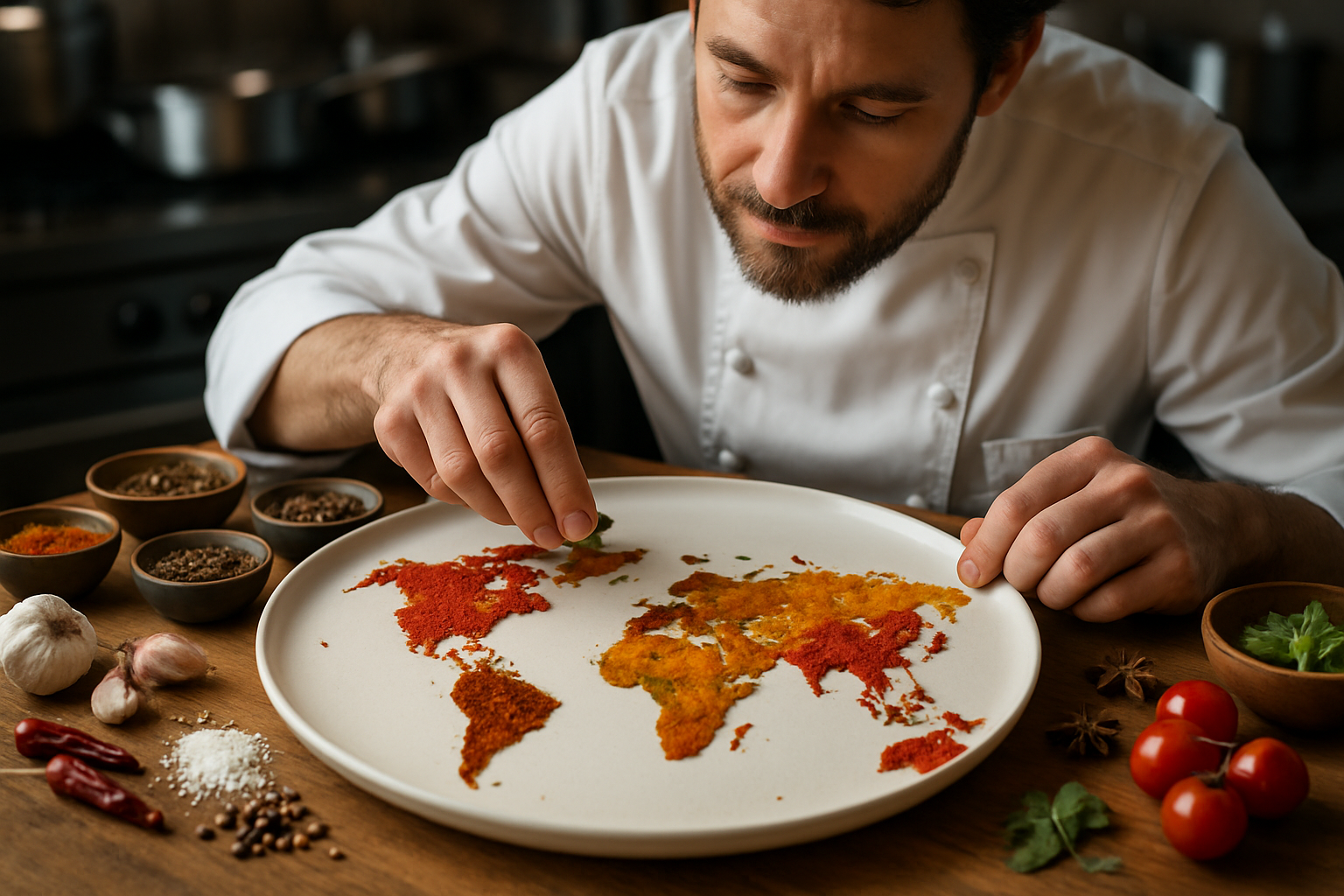Culinary Alchemy: The Art of Flavor Pairing
Embark on a sensory adventure as we explore the fascinating world of flavor pairing. Discover how unexpected ingredient combinations can create culinary magic, elevating your dishes from ordinary to extraordinary. Join us as we delve into the science and artistry behind this gastronomic phenomenon.

Unexpected Duos That Delight
Some of the most intriguing flavor pairings often seem counterintuitive at first glance. Take, for example, the combination of strawberries and basil. While one might not immediately think to pair these ingredients, their shared flavor compounds create a surprisingly refreshing and aromatic experience. Another unexpected duo is chocolate and avocado. The rich, creamy texture of avocado complements the deep, complex flavors of chocolate, resulting in a decadent treat that’s both indulgent and nutritious.
Global Inspiration for Flavor Fusion
Drawing inspiration from diverse culinary traditions can lead to exciting flavor pairings. For instance, the Moroccan tradition of combining sweet and savory flavors has given rise to dishes like tagine with apricots and lamb. In Southeast Asian cuisine, the balance of sweet, sour, salty, and spicy flavors creates complex taste profiles that have inspired chefs worldwide. By exploring these global flavor combinations, you can expand your culinary repertoire and create unique dishes that reflect a fusion of cultures.
Tools of the Trade
To become proficient in flavor pairing, it’s essential to familiarize yourself with some key tools and resources. Flavor wheels, which visually represent the relationships between different tastes and aromas, can be invaluable in identifying complementary ingredients. Online databases and apps dedicated to flavor pairing can also provide inspiration and guidance. Additionally, keeping a flavor journal to document your experiments and discoveries can help you develop your own unique style and preferences in the kitchen.
From Theory to Practice
Putting flavor pairing principles into practice requires a bit of courage and a willingness to experiment. Start by selecting a base ingredient and identifying its dominant flavor notes. Then, consider ingredients that share similar compounds or offer contrasting tastes that could enhance the overall dish. For example, if you’re working with a rich, fatty protein like pork belly, you might pair it with acidic elements like pickled vegetables or a citrus-based sauce to cut through the richness and create a balanced plate.
Useful Tips & Facts
-
The “flavor bridge” technique involves using a third ingredient to connect two seemingly incompatible flavors.
-
Herbs and spices can be powerful tools in flavor pairing, often acting as the binding element between disparate ingredients.
-
Texture plays a crucial role in flavor perception; consider how different textures can enhance or detract from a flavor combination.
-
Some classic flavor pairings, like tomato and basil, work because they share flavor compounds at the molecular level.
-
The concept of terroir, or the environmental factors that affect a crop’s flavor, can be useful in identifying complementary ingredients from the same region.
In conclusion, mastering the art of flavor pairing opens up a world of culinary possibilities. By understanding the science behind taste, drawing inspiration from global cuisines, and embracing experimentation, you can create dishes that not only satisfy but also surprise and delight. Remember, the most exciting flavors often emerge from the most unexpected combinations. So, let your creativity soar, trust your palate, and embark on your own flavor-pairing adventures in the kitchen.





